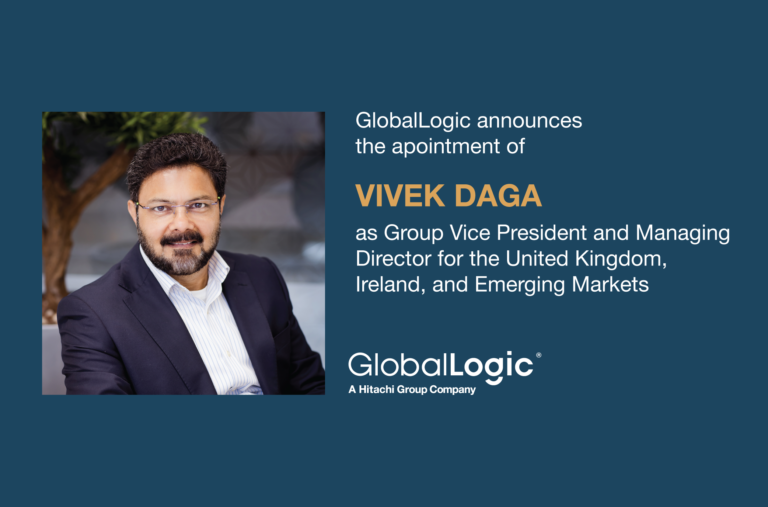- Services
Technology Capabilities
Technology Capabilities- Product Strategy & Experience DesignDefine software-driven value chains, create purposeful interactions, and develop new segments and offerings
- Digital Business TransformationAdvance your digital transformation journey.
- Intelligence EngineeringLeverage data and AI to transform products, operations, and outcomes.
- Software Product EngineeringCreate high-value products faster with AI-powered and human-driven engineering.
- Technology ModernizationTackle technology modernization with approaches that reduce risk and maximize impact.
- Embedded Engineering & IT/OT TransformationDevelop embedded software and hardware. Build IoT and IT/OT solutions.
- Industries
- GlobalLogic VelocityAI
- Insights
BlogsGlobalLogicJuly 27, 2023Exploring Snowpark and Streamlit for Data Science
I’m Janki Makwana, a Data Scientist at GlobalLogic. I have been working with a major re...
 BlogsJuly 18, 2023Manik Jandial
BlogsJuly 18, 2023Manik JandialView on payment industry modernisation: Enablers of change
Welcome to the second part of our two-part series on the evolving payment industry! In ...

- About
Published on May 21, 2025AI Adoption: Where Digital Transformation Fails or Scales
View all articles Dr. Vanina DelobelleShare
Dr. Vanina DelobelleShare GlobalLogic27 November 2025
GlobalLogic27 November 2025 GlobalLogic19 November 2025View All Insights
GlobalLogic19 November 2025View All Insights GlobalLogic17 November 2025Recommended authorsDirector, Industrial BU GSPSenior Vice President & Head of EMEAView all authorsVice President & Consumer Business, Americas GlobalLogic
GlobalLogic17 November 2025Recommended authorsDirector, Industrial BU GSPSenior Vice President & Head of EMEAView all authorsVice President & Consumer Business, Americas GlobalLogicLet's start engineering impact together
GlobalLogic provides unique experience and expertise at the intersection of data, design, and engineering.
Get in touchAI GovernanceAI-Powered SDLCTransformation AdvisoryCross-IndustryAI is transforming every industry. While companies are building applications to boost productivity and efficiency, success ultimately depends on something less technical: adoption. Without it, even the best-designed tools can fall short.
Adoption is where transformation either succeeds or stalls. Driving adoption across a global enterprise adds another layer of complexity. Multiple countries, languages, time zones, and cultural expectations can all shape how new technology is received.
At GlobalLogic, we see this firsthand. Our clients operate on a global scale, and while their transformation goals may be similar, their adoption challenges are often unique. Success begins by recognizing that AI adoption must be designed around people. That means understanding regional behaviors, cultural nuances, and day-to-day workflows.

Why Global Adoption Is Both Complex and Strategic
Rolling out change across a global organization is never one-size-fits-all. Some regions or business units adopt new tactics quickly, while others need more structure or time. In some cases, adoption happens organically. In others, it requires hands-on guidance. Successful change agents recognize the importance of tailoring their approach to each audience, paying close attention to how messages are communicated and received.
At the same time, diversity within the organization can be a powerful advantage. When adoption happens at different speeds, it creates natural testing grounds. A tactic that proves successful in one region can be refined and scaled to others. Local champions often emerge as trusted voices, helping to drive engagement across borders. Centralized training and communication provide consistency, while still allowing room for local adaptation. And as teams share lessons and results, they reduce duplication and help each other mature faster.
Global adoption requires thoughtful orchestration. But when done well, it becomes a strategic lever, not a barrier, for digital transformation.
Common Barriers to AI Adoption in Global Organizations
In our work with global enterprises, we often see resistance from employees who fear disruption, job insecurity, or unfamiliar tools. Without strong leadership buy-in, these concerns are amplified, leading to misalignment and stalled progress. Communication breakdowns—especially around the “why,” “how,” and personal impact—can further undermine trust and engagement.
Here are other common barriers that can hinder AI adoption:
- Cultural friction, particularly in risk-averse or highly structured environments.
- Clunky user experiences or overly complex tools that frustrate early adopters.
- Insufficient training, especially for non-technical users who feel left behind.
- Unclear goals or vision, making it difficult for teams to stay motivated and aligned.
- Change fatigue, when too many initiatives compete for attention at once.
- Lack of feedback loops, leaving no way to measure, adjust, or build on what’s working.
- One-size-fits-all approaches that ignore differences in workflows, teams, or geographies.
- Low trust in AI tools, especially after early-generation models failed to deliver.
- Inconsistent data quality, limiting the effectiveness and scalability of AI solutions.
- Immature use cases, which often require refinement before showing real value.
- Siloed structures and politics, which block collaboration and slow decision-making.
- Technology immaturity, as many AI solutions are still in early stages and haven’t proven ROI at scale.
Understanding these barriers is the first step toward removing them. With the right strategy, these obstacles can become opportunities to design smarter, more sustainable adoption programs.
What Drives Scalable and Sustainable AI Adoption
Overcoming adoption barriers doesn’t happen by chance. It requires intentional design, committed leadership, and a clear roadmap. Based on what we’ve seen across successful global transformations, several key enablers consistently make the difference.
First, a CEO mandate is essential. But it must be grounded in the realities of the business. True adoption starts at the grassroots level, where experimentation and feedback shape what works. When executive leadership builds on those insights with a clear top-down directive, the strategy gains both credibility and traction. Leadership alignment is also critical. Senior leaders need to speak with one voice, reinforcing consistent messages across the organization. Mixed signals from leadership can erode trust and slow momentum.
A dedicated change team plays a central role. While engaged individuals can drive early interest, sustainable change requires a group whose sole focus is to coordinate implementation, maintain clarity, and keep momentum alive. These change agents must be empowered to make decisions and respond quickly to roadblocks.
Clear, accessible materials that support a unified message are equally important. Employees need to understand not just the “what,” but the “why” behind the initiative. If the message shifts too often, it creates confusion and weakens trust. Consistency builds confidence.
At the same time, successful adoption depends on balancing global alignment with local adaptability. Organizations need a shared vision and roadmap, supported by flexibility to reflect cultural and regional differences. Everyone should be moving in the same direction, even if the pace or path varies slightly.
Understanding employee mindsets is another essential step. Identifying different archetypes, including their concerns, motivations, and learning needs, allows for targeted communication that resonates on a personal level. Training must be role-specific, accessible in multiple formats, and offered at multiple levels across the organization. Learning should feel relevant and empowering, not burdensome or theoretical.
The right organizational structure also matters. Expertise and efficiency thrive in environments where roles are clearly defined, cross-functional collaboration is enabled, and ownership is distributed. Champions play a vital role. They do not have to be managers. Influential advocates can come from any level and help translate strategy into action. With the right tools and support, they inspire peers and contribute valuable feedback from the field.
Establishing a Center of Excellence (CoE) brings coordination and consistency. A strong CoE helps align leadership, consolidate activities across business units, and maintain momentum. It also supports decision-making, breaks down silos, and reinforces shared goals.
Finally, measurement is essential. Organizations must define KPIs early and use them to track progress and adjust strategy. Regular check-ins through surveys, interviews, and performance reviews help validate the approach and guide continuous improvement.
Adoption is not a single event. It is a continuous process that must be managed, nurtured, and refined over time. With the right foundation, organizations can drive AI adoption that delivers lasting impact at scale.
Adoption Is the Real Transformation
Adoption is often the most important and complex part of deploying new technology. Many organizations invest in powerful AI tools, only to see them stall without the right mechanisms to drive sustained use.
What makes adoption especially nuanced is that no two strategies are the same. Culture, starting point, and workforce composition all shape how AI should be introduced and integrated. Still, the principles outlined here provide a solid foundation to build on. They offer a practical framework for steering adoption in the right direction, no matter where an organization begins.
Ultimately, adoption is not just a milestone. It’s the bridge between innovation and business value.
At GlobalLogic, we understand what it takes to deliver successful AI programs. That’s why we created VelocityAI, a suite of solutions that combines advanced design, engineering expertise, and talent development. When you partner with GlobalLogic, you gain a team that supports your full AI journey—from ideation to development to adoption—ensuring that your transformation delivers real, measurable outcomes.
Ready to turn AI vision into adoption at scale? Contact us and let’s explore how VelocityAI can accelerate your journey.
 How can I help you?
How can I help you?
Hi there — how can I assist you today?
Explore our services, industries, career opportunities, and more.
Powered by Gemini. GenAI responses may be inaccurate—please verify. By using this chat, you agree to GlobalLogic's Terms of Service and Privacy Policy.


